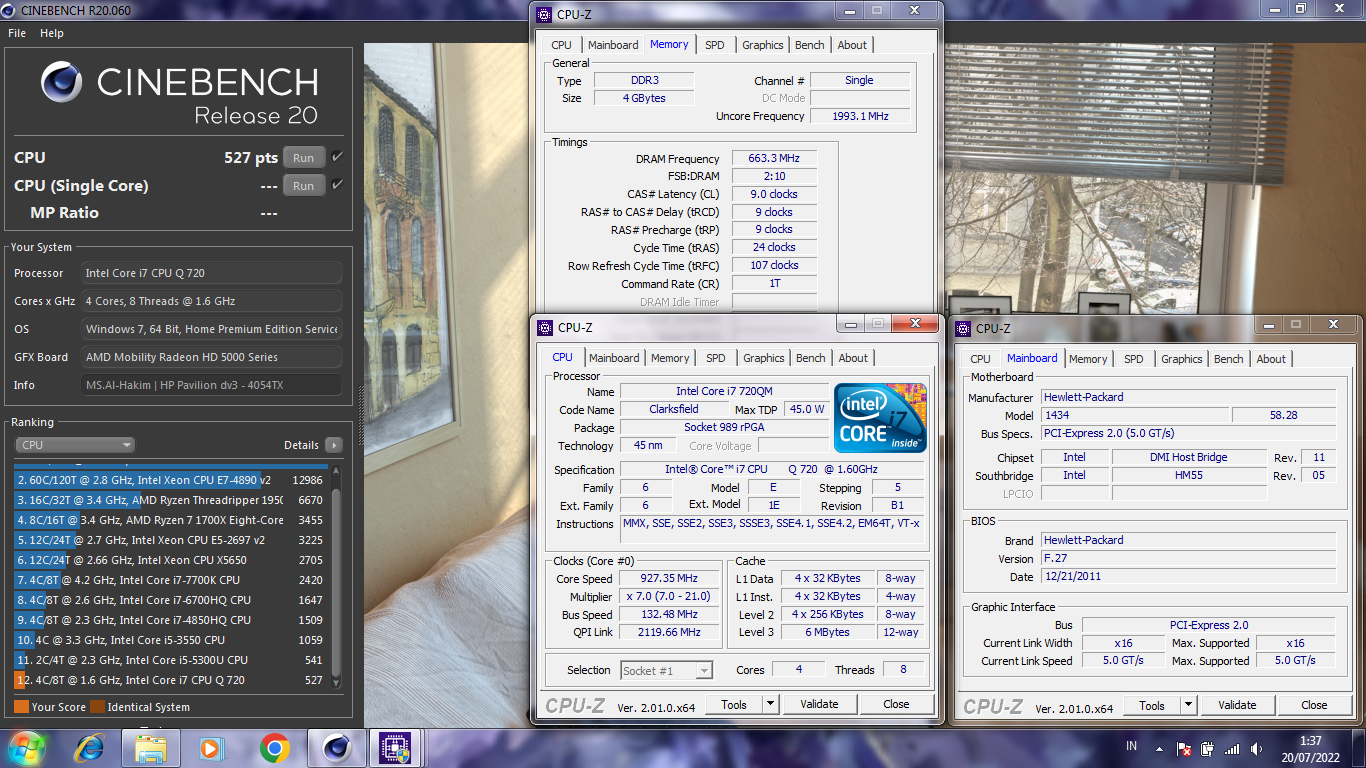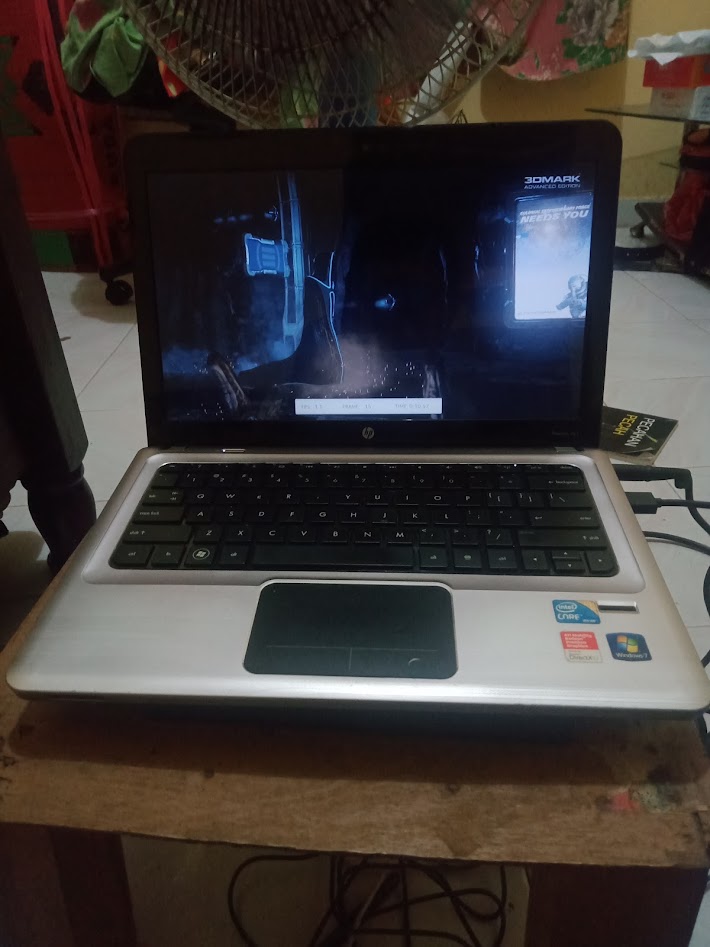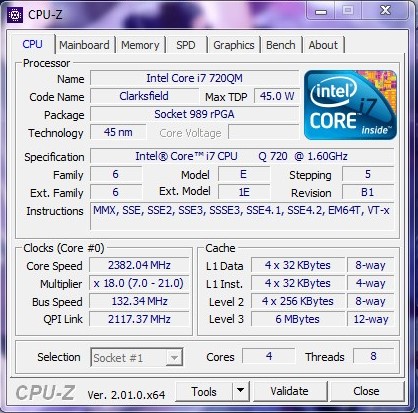Cinebench - R20 score 527 pts with a i7-720QM
Thursday, 01 January 1970 07:00 | Update at null
Media Gallery
Screenshot

Device, Setup, etc



URL
https://hwbot.org/submission/5044481https://www.facebook.com/hakimnu.id/posts/3334965160069457
Information Detail
Hardware: Intel Core i7 720QM
Specs:CPUID : Intel(R) Core(TM) i7 CPU Q 720 @ 1.60GHz
Architecture : x86
Codename : Clarksfield
L3 Cache : 6MB
Clock : 1.60GHz - 2.80GHz
Core/Thread : 4/8
TDP : 45W
Technology : 45nm
Socket : PGA988
IGPU : -
See more specification...
Software: Cinebench - R20
Score: 527 pts
About: Cinebench - R20Cinebench R20 is one of the most popular CPU benchmarks developed by Maxon, the company behind the professional 3D animation software Cinema 4D. This benchmark is designed to test processor performance in complex photorealistic rendering scenarios, utilizing the latest rendering engine from Cinema 4D Release 20. Cinebench R20 provides a more demanding and realistic test compared to previous versions like R15, making it a relevant benchmark for modern systems and processors.
In this test, the system is designed to render a high-quality 3D scene that utilizes various advanced rendering techniques, such as global illumination, area shadows, physical materials, and full CPU utilization down to the smallest cores and threads. Cinebench R20 requires more memory, processing power, and longer render times, providing a more accurate representation of a processor's real-world performance, especially in demanding tasks like rendering, video editing, and 3D simulation.
Unlike previous versions, Cinebench R20 does not include GPU/OpenGL testing, so its primary focus is purely on the CPU's ability to handle multi-threaded workloads. The resulting scores are presented in points (pts), where higher values indicate the CPU's ability to complete rendering processes faster and more efficiently. This is crucial for content creators, designers, and professional users looking to select the best CPU for their productivity needs.
Cinebench R20 has become an industry standard for reviewers, overclockers, and technicians in objectively and consistently testing CPU performance. With workloads that reflect real-world scenarios and optimizations for modern processors, this benchmark remains one of the most important tools for evaluating and comparing system performance in depth.
The Intel Core i7-720QM, launched in Q3 2009, was one of the first mobile quad-core processors to feature Intel's Nehalem microarchitecture, specifically the Clarksfield variant. Targeted at high-performance laptops, such as gaming machines and mobile workstations, the i7-720QM brought 4 physical cores and 8 threads to the mobile platform, thanks to Hyper-Threading Technology providing a significant boost in multi-threaded workloads like video editing, 3D rendering, and other professional-grade applications. The processor runs at a base clock speed of 1.6 GHz, but it can dynamically increase up to 2.8 GHz using Intel Turbo Boost, depending on thermal headroom and power availability.
Manufactured using a 45nm process, the i7-720QM has a TDP of 45W, which is quite high by today's mobile CPU standards. This thermal demand necessitated more robust cooling solutions in laptops that featured the chip. Unlike modern CPUs, the i7-720QM does not come with integrated graphics, which means systems based on this processor require a dedicated GPU often from AMD or NVIDIA for graphics processing and display output. As such, it was typically paired with mid-to-high-end discrete graphics cards in its time, making it a solid choice for gaming and multimedia laptops in the late 2000s and early 2010s.
While the Core i7-720QM was a powerhouse during its release, its performance and efficiency are significantly outpaced by modern CPUs built on smaller nodes and with higher IPC (Instructions Per Clock). Nevertheless, legacy laptops using the i7-720QM can still be viable for basic computing tasks like web browsing, document editing, or watching videos especially if paired with an SSD upgrade and increased RAM. Users running Windows 10 on such systems may experience some limitations, but with proper optimization and lightweight software, the CPU can still deliver a usable experience in non-demanding environments.
Hardware Detail:
Device: HP Pavilion dv3-4054TX
RAM: 4GB DDR3 Single Channel
OS: Windows 7, Windows 10
* Not Avaiable
